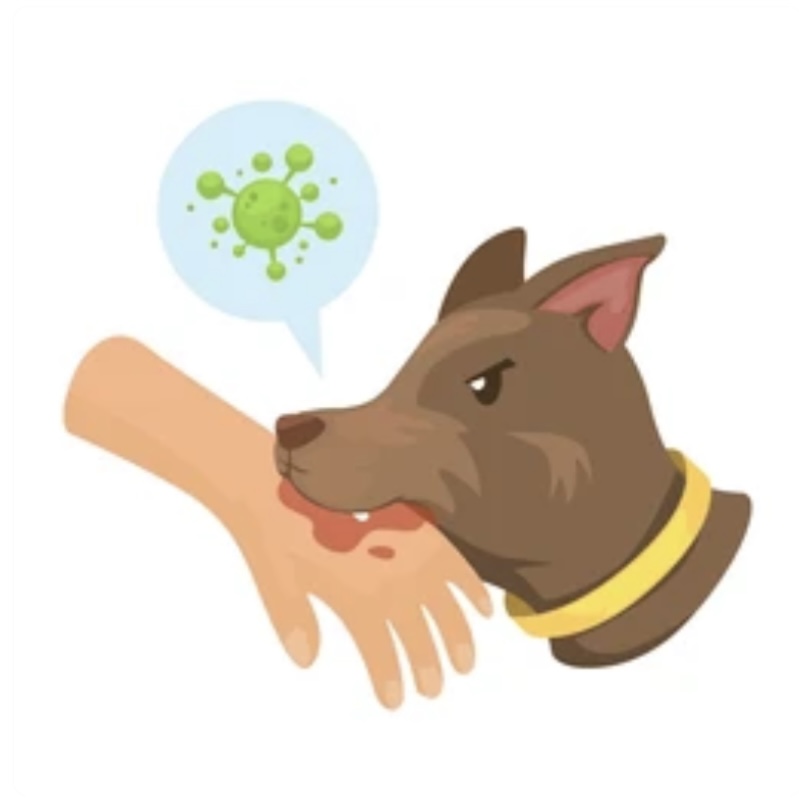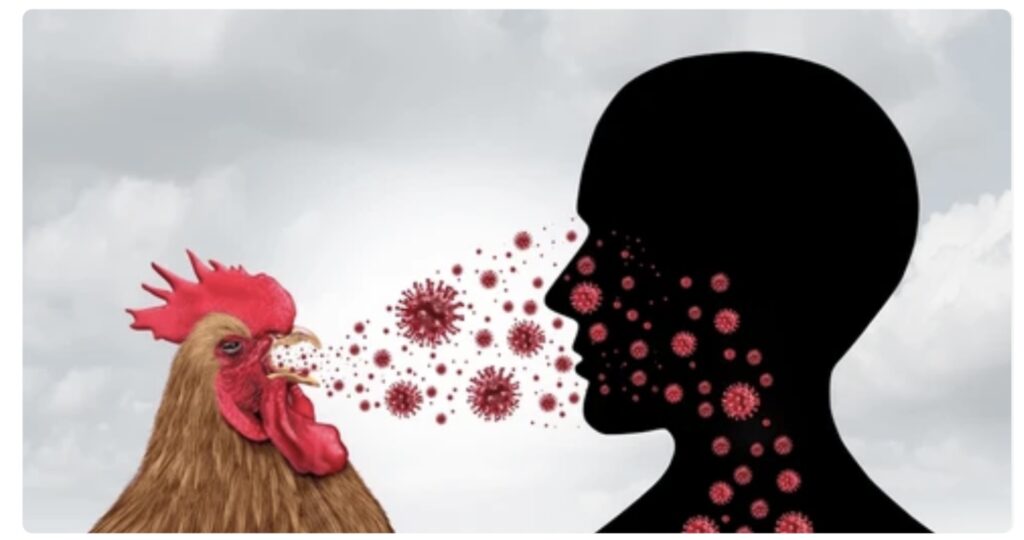INTRODUCTION
Common zoonotic diseases: Zoonotic diseases are infectious diseases that are transmitted from animals to humans. These diseases are caused by a variety of pathogens including viruses, bacteria, parasites, and fungi, and they account for a significant portion of emerging infectious diseases. Zoonotic diseases can be transmitted through direct contact with infected animals, consumption of animal products, or vectors such as mosquitoes and ticks. In some cases, they can spread through environmental factors like contaminated water or soil.
Given the close interaction between humans and animals in many parts of the world, zoonotic diseases pose a significant public health risk. In this article, we will explore what zoonotic diseases are, the different ways they are transmitted, common examples, their global impact, and the strategies that can be employed to prevent their spread.
What Are Zoonotic Diseases?
Zoonotic diseases (also called zoonoses) are infections that are naturally transmissible between animals and humans. These diseases can affect both humans and animals, and in many cases, they involve a specific set of host species. Zoonotic infections are a key factor in the transmission of several high-profile diseases that affect both public health and agriculture.
The World Health Organization (WHO) estimates that more than 60% of all infectious diseases in humans are zoonotic, and many of the most dangerous diseases, such as Ebola, rabies, and avian influenza, are transmitted from animals to humans.
How Are Zoonotic Diseases Transmitted?
Zoonotic diseases are transmitted in a variety of ways, depending on the pathogen involved. Common routes of transmission include:
- Direct Contact: Handling, touching, or coming into close contact with infected animals, their body fluids, feces, or urine. For example, people who work with livestock or handle pets are at risk of contracting zoonotic diseases such as Brucellosis or Toxoplasmosis.
- Consumption of Animal Products: Eating undercooked or contaminated meat, drinking raw milk, or consuming contaminated eggs can lead to infection. Diseases like Salmonella, Campylobacter, and Trichinosis are commonly spread this way.
- Vector-Borne Transmission: Many zoonotic diseases are transmitted by vectors like mosquitoes, ticks, and fleas. Diseases such as West Nile virus, Lyme disease, and Malaria are transmitted by these vectors, which are often associated with wildlife or domestic animals.
- Environmental Exposure: Some zoonotic diseases are transmitted via environmental factors, such as contaminated water, soil, or air. For example, Leptospirosis can be contracted from water contaminated by infected animal urine.
- Airborne Transmission: Some diseases, such as Hantavirus and Q fever, are spread by inhaling particles or aerosols contaminated with animal waste, urine, or saliva.
- Bite or Scratch: Animal bites or scratches, especially from wild animals like bats, dogs, or rodents, can transmit diseases like Rabies or Plague.
Common Zoonotic Diseases
Zoonotic diseases can be caused by a wide range of pathogens. Here are some of the most notable zoonoses:
1. Rabies

Causative Agent: Rabies virus
Transmission: Rabies is most commonly transmitted through the bite of an infected animal, such as dogs, bats, and raccoons. The virus affects the central nervous system, leading to encephalitis, paralysis, and death if untreated.
Symptoms: Early symptoms include fever, headache, and malaise, progressing to anxiety, confusion, hallucinations, hydrophobia, and paralysis. Once symptoms appear, rabies is almost always fatal.
Prevention: Rabies is preventable with a post-exposure vaccination. Vaccinating pets and avoiding contact with wild animals are crucial in preventing the spread.
2. Avian Influenza (Bird Flu)

Causative Agent: Influenza A virus, particularly H5N1
Transmission: Avian influenza is typically transmitted through direct contact with infected birds (especially poultry) or contaminated surfaces. Humans can contract the virus through the handling of infected birds or consumption of undercooked poultry.
Symptoms: Symptoms can resemble those of the flu, including fever, cough, sore throat, and muscle aches. Severe cases can lead to pneumonia, respiratory failure, and death.
Prevention: Avoiding contact with sick birds, ensuring proper cooking of poultry, and vaccinating poultry against avian influenza can reduce the risk of transmission.
3. Lyme Disease
Causative Agent: Borrelia burgdorferi (bacterium)
Transmission: Lyme disease is transmitted by ticks, particularly Ixodes scapularis (black-legged or deer tick). These ticks become infected by feeding on wildlife such as deer and mice, and they can transmit the bacteria to humans during their blood meal.
Symptoms: Early signs include a characteristic “bull’s-eye” rash, fever, fatigue, and joint pain. If left untreated, it can cause chronic arthritis, heart problems, and neurological disorders.
Prevention: Preventing tick bites by using insect repellent, wearing long sleeves and pants, and avoiding tick-infested areas is key. Tick removal within 24 hours can prevent infection.
4. Brucellosis (Undulant Fever)
Causative Agent: Brucella species (bacteria)
Transmission: Brucellosis is typically transmitted to humans through direct contact with infected animals (cattle, goats, sheep) or consumption of unpasteurized dairy products.
Symptoms: Symptoms include fever, sweating, joint and muscle pain, and fatigue. In severe cases, brucellosis can cause long-term complications such as arthritis, endocarditis, or chronic fatigue.
Prevention: Vaccinating livestock, avoiding unpasteurized dairy products, and wearing protective clothing when handling animals can prevent brucellosis.
5. Ebola Virus Disease
Causative Agent: Ebola virus
Transmission: Ebola is primarily transmitted through direct contact with the blood, bodily fluids, or tissues of infected animals (especially fruit bats and primates) or humans.
Symptoms: Ebola causes severe hemorrhagic fever, characterized by fever, vomiting, diarrhea, bleeding, and organ failure. Mortality rates are high, with some outbreaks reaching over 50%.
Prevention: Strict infection control practices, avoiding bushmeat consumption, and safe burial practices for deceased individuals are critical in preventing the spread. A vaccine is available for high-risk populations.
6. Hantavirus Pulmonary Syndrome
Causative Agent: Hantavirus
Transmission: Hantavirus is transmitted through inhalation of aerosolized particles from the urine, saliva, or feces of infected rodents. Infections are more common in areas where rodent populations are high.
Symptoms: Early symptoms include fever, muscle aches, and dizziness, progressing to shortness of breath and respiratory failure. The disease can be fatal if not treated promptly.
Prevention: Reducing rodent exposure by sealing entry points to homes, proper disposal of rodent waste, and avoiding contact with rodent nests can prevent hantavirus infection.
7. Plague
Causative Agent: Yersinia pestis (bacterium)
Transmission: Plague is typically transmitted by fleas that bite infected rodents, including rats, squirrels, and prairie dogs. Humans can also contract the disease through direct contact with infected animals or their tissues.
Symptoms: Symptoms include fever, swollen lymph nodes (buboes), and septicemia. Plague can be fatal if not treated with antibiotics.
Prevention: Controlling rodent populations, using insect repellents to prevent flea bites, and practicing good hygiene when handling animals or animal carcasses are key preventive measures.
Impact of Zoonotic Diseases
Zoonotic diseases are responsible for a significant burden on global health. According to the World Health Organization (WHO), about 60% of all infectious diseases are zoonotic. These diseases are a major concern in both developed and developing countries, particularly in regions where people have frequent close contact with animals. Zoonotic diseases can cause outbreaks and pandemics, leading to loss of life, economic disruption, and widespread fear.
The emergence of diseases like COVID-19, which is believed to have originated from an animal source, has highlighted the importance of preventing zoonotic spillover events and improving surveillance of animal-human interactions. Climate change, urbanization, and changes in human behavior (such as deforestation or increased wildlife trade) are also contributing to the rise of zoonotic diseases.
Prevention and Control of Zoonotic Diseases
- Surveillance and Early Detection: Monitoring wildlife, livestock, and human populations for signs of zoonotic diseases is critical in preventing outbreaks. Early detection can help contain the spread and prevent human infections.
- Vaccination: Vaccination of animals, especially domesticated animals like pets and livestock, can prevent the spread of zoonotic diseases. For example, rabies vaccination in dogs is a key strategy in preventing human rabies.
- Public Health Education: Educating the public about the risks of zoonotic diseases, especially in rural or agricultural areas, can help reduce transmission. Teaching people about proper hygiene, safe food handling, and avoiding risky animal contact is essential.
- Vector Control: Managing vector populations (like mosquitoes and ticks) through insecticides, bed nets, and public awareness campaigns can reduce the transmission of vector-borne diseases like malaria, dengue, and Lyme disease.
- Sustainable Practices: Encouraging sustainable agriculture and responsible wildlife management can help reduce human-wildlife contact and prevent the emergence of new zoonoses.
Conclusion
Zoonotic diseases are a significant global health concern, with the potential to cause severe outbreaks, economic disruption, and loss of life. As human-animal interactions increase, particularly in areas where wildlife is being encroached upon by urbanization or agricultural practices, the risk of zoonotic transmission grows. However, through a combination of surveillance, prevention strategies, public health initiatives, and sustainable practices, zoonotic diseases can be controlled and their spread minimized. Proactive efforts, both at the individual and global levels, are essential to preventing these dangerous diseases from impacting public health worldwide.



Pingback: WHAT IS A PARASITE | ZOOLOGYTALKS | 2024